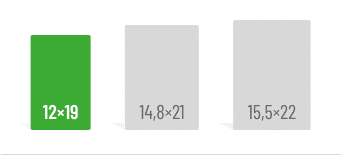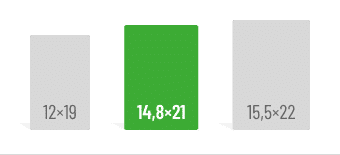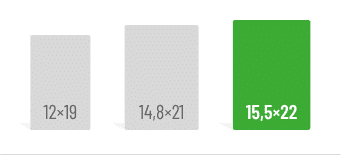First things first:
- Choose a writing program that fits your needs.
- Save your work as a PDF file before printing. This ensures that the formatting remains intact.
If you want to study at a university, a good writing program is essential. At the latest, you’ll need one for your thesis to put your thoughts into words and prepare them for printing. A word processing program doesn’t just store text; it also allows you to add citations, cross-references, and professional formatting. All of this is just as important to an academic text as your research results. To work productively, you should find a program that suits your needs. A simple three-page essay has different requirements than a hundred-page dissertation. Depending on your field, additional criteria may come into play, such as how well the program handles images, graphics, or formulas. To guide you, we will provide you with an overview of popular writing programs, including their pros and cons.
Microsoft Word
In the Microsoft universe, Word has established itself as a classic among word processors. The principle of the program is “What You See Is What You Get”. If you add formatting or a footnote, it will also appear as such in the document. In Word, for example, it is particularly easy to format a text and get an impression of its later appearance in print. In addition, the program provides all the important elements for a scientific text: style sheets, automated tables of contents and figures, automated footnotes and even a function for reference management. Although Word is quite intuitive, not all settings are visible at first glance. We have therefore collected some tips and tricks for formatting scientific texts in Microsoft Word on our website and in our magazine .
For most student assignments, Word serves its purpose well, although it is only available as a paid program (with a discounted rate for students). However, creating formulas in Word can be cumbersome, and the program may struggle with very large documents containing numerous images and references, sometimes reaching its capacity limits. On the plus side, Word is available in a simplified version through OneDrive, which can be used directly in your browser.
- the classic among writing programs, highly user-friendly
- Simple formatting options
- provides all essential tools for academic writing
- paid software (but available at a discount for students)
- creating formulas can be cumbersome
- reaches capacity limits with very large texts containing numerous images and references
Pages
Pages is Apple’s standard word processing program. It is available for free on the App Store, but can only be used on Apple devices and can be used on both desktop and mobile devices . Pages is also available in a browser-based version, but it has a reduced range of functions compared to the app. In Pages, changes to text, formatting, and references also appear immediately. The view in which you edit corresponds to the final appearance, as you would print it, for example. In Pages, you’ll find all the settings for academic papers , such as automated indexes, customizable styles, and automated references and footnotes. In the browser version, you can also work on a document with fellow students, as long as they have an Apple ID.
- intuitive operation
- free
- all settings for academic writing available
- limited to Apple devices
- fewer features than Word
- Browser version with greatly reduced functionality
LibreOffice Writer
If you’re looking for a free word processing program with a similar interface to Microsoft Word or Pages, LibreOffice Writer might be the right choice. This is an open-source program that is continuously being developed. However, its feature set is somewhat smaller than that of the other two options. For example, there is currently no option for real-time collaboration on a document.
If you’re used to Microsoft Word, you’ll need some time to adjust before you can fully navigate its functions and settings. Nevertheless, LibreOffice Writer is just as suitable for academic writing as its more well-known counterparts.
- continuous updates
- Free
- offers all the necessary functions for academic writing
- Fewer features than Word and Pages
- not yet possible to work together on the text
- less intuitive than Word
You might also be interested in these articles:
Google Docs
The strength of Google Docs lies in its collaborative capabilities. It is browser-based and works through a Google account. All documents are automatically saved to the cloud, allowing you to access them from any device. Additionally, sharing documents for joint editing is very straightforward. Google is now so widely used that most people already have an account. However, it’s also possible to share documents for editing with someone who doesn’t have a Google account—all you need is their email address. While Google Docs includes all the basic features for academic texts, such as templates and footnotes, it is not necessarily ideal for longer academic works. The alternatives mentioned earlier offer more customization options and deliver better results for such projects.
- collaborative text editing made easy
- cross-device work possible
- offers all the necessary functions for academic writing
- Fewer features than Word and Pages
- no offline use, stable internet connection required
LaTeX
LaTeX is more of a typesetting program, designed to enable professional text formatting. Its strength lies not only in handling text but also in managing and finalizing the layout of images, graphics, and especially formulas. For this reason, LaTeX has become the standard program, particularly in the natural sciences.
However, its workflow differs significantly from the previously mentioned programs as it does not follow the “What You See Is What You Get” principle. In LaTeX, every text element is individually defined, and formatting is handled separately. Content and formatting are kept distinct from each other, meaning you’ll only see the final appearance of your work after exporting it as a PDF file.
When using LaTeX, you should therefore allow for a certain amount of time to get used to it. If you want to use LaTeX for your thesis, for example, it makes sense to start using it early in your studies. This way, you avoid unnecessary stress at the end of your studies by not having to research the content of a larger topic and at the same time familiarize yourself with the typesetting program. LaTeX is particularly recommended for long periods of work with complex elements. It is also a free program that supports numerous extensions such as BibTeX for reference management.
- particularly well-suited for scientists and researchers in the natural sciences
- strong in editing figures, graphics and formulas
- free
- Content and formatting separated, final layout only visible after export
- Long acclimatization period
- Complex personalization
Ready to submit?
No matter which word processing program you choose, you should always export your final work as a PDF. All the programs mentioned here offer this feature. A PDF file provides a reliable standard that is always interpreted the same way. This ensures that your work won’t arrive completely misaligned on your professor’s computer and that you don’t have to face issues with incompatible programs or shifted layouts at the print shop. By exporting as a PDF, you ensure that your academic work appears exactly as you intended, both in content and layout.
Frequently asked questions
The most commonly used writing programs are Microsoft Word, Pages, LibreOffice, Google Docs and LaTeX.
Pages (for Apple devices), LibreOffice Writer, Google Docs and LaTeX can be downloaded free of charge.
Do you like our magazine? Then sign up for our GRIN newsletter now!










